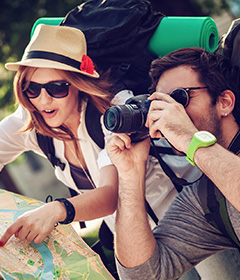Attending festivals abroad offers a unique opportunity to immerse yourself in different cultures and create unforgettable memories. However, navigating unfamiliar customs and etiquette can be challenging, often leaving travellers feeling like outsiders. This comprehensive guide will equip you with the knowledge and strategies needed to fully engage in international celebrations, ensuring you feel like a welcomed participant rather than a distant observer.
Cultural immersion techniques for festival participation
To truly appreciate and engage in festivals abroad, it’s essential to immerse yourself in the local culture. This goes beyond simply showing up at the event; it involves understanding the festival’s significance, history, and traditions. Start by researching the festival’s origins and meaning to the local community. This knowledge will not only enhance your experience but also demonstrate respect for the culture you’re visiting.
One effective way to immerse yourself is to learn about the festival’s traditional activities and rituals. Many celebrations have specific dances, songs, or ceremonies that are integral to the experience. Try to learn the basics of these traditions before you arrive. For example, if you’re attending the Rio Carnival, familiarise yourself with samba steps or popular carnival songs. This preparation will help you participate more actively and confidently.
Another crucial aspect of cultural immersion is connecting with locals. Attend pre-festival events or workshops if available. These gatherings often provide valuable insights into the celebration’s nuances and offer opportunities to meet people who can guide you through the experience. Remember, locals are often proud of their traditions and appreciate visitors who show genuine interest in learning about them.
Etiquette and customs at international celebrations
Understanding and respecting local etiquette is paramount when participating in festivals abroad. Each culture has its own set of unwritten rules and expectations, and adhering to these can make the difference between being welcomed as a respectful guest and being perceived as an inconsiderate tourist.
Navigating dress codes: from oktoberfest to holi
Dressing appropriately is a crucial aspect of festival etiquette. Some celebrations have specific dress codes or traditional attire that participants are expected to wear. For instance, at Oktoberfest in Munich, many attendees wear dirndls for women and lederhosen for men. While it’s not mandatory, embracing this tradition can enhance your experience and show respect for the local culture.
Conversely, at the Holi festival in India, it’s best to wear old, light-coloured clothes that you don’t mind getting stained with colourful powders. Understanding these nuances helps you blend in and fully participate without feeling out of place. Always research the specific dress expectations for the festival you’re attending to ensure you’re prepared.
Respectful behaviour at religious festivals like diwali
When attending religious festivals like Diwali in India or Eid al-Fitr in Muslim countries, it’s crucial to observe appropriate behaviour. This often includes modest dress, removing shoes before entering sacred spaces, and refraining from public displays of affection. Be mindful of photography restrictions in religious sites and always ask for permission before taking pictures of people or sacred objects.
During these celebrations, it’s also important to respect dietary restrictions. For example, during Diwali, many Hindus abstain from eating meat. Being aware of and accommodating these practices shows cultural sensitivity and helps you integrate more smoothly into the festivities.
Gift-giving protocols: tet in vietnam and beyond
Gift-giving is an integral part of many festivals worldwide, but the protocols can vary significantly. During Tet, the Vietnamese New Year, it’s customary to give li xi (red envelopes containing money) to children and elderly relatives. However, the amount and presentation of these gifts follow specific cultural norms.
In other cultures, certain gifts may be considered inappropriate or even offensive. For instance, in many Asian countries, clocks are associated with death and should be avoided as gifts. Always research gift-giving customs for the specific festival and culture you’re visiting to ensure your gestures are well-received.
Dining etiquette: mastering ramadan iftar dinners
Food plays a central role in many festivals, and understanding dining etiquette is crucial. During Ramadan, for example, participating in an Iftar dinner (the meal to break the fast) requires knowledge of specific customs. Wait for the call to prayer before eating, use your right hand for eating and passing food, and avoid drinking alcohol or smoking in public.
In other festivals, there may be traditional ways of serving or consuming certain dishes. Learning these customs not only prevents social faux pas but also deepens your appreciation of the cultural experience. Remember, observing how locals eat and mirroring their behaviour is often a safe approach when you’re unsure.
Language preparation for festival engagement
Language can be a significant barrier when participating in international festivals. However, making an effort to learn key phrases and understand local linguistic nuances can greatly enhance your experience and help you connect with fellow festival-goers.
Essential phrases for rio carnival interactions
For the Rio Carnival, learning basic Portuguese greetings and festival-specific terms can make a world of difference. Phrases like “Olá” (Hello), “Obrigado/a” (Thank you), and “Feliz Carnaval!” (Happy Carnival!) can help you interact with locals and show your enthusiasm for the celebration. Additionally, understanding terms like “bloco” (street party) and “sambódromo” (the venue for the samba parade) will help you navigate the festivities more easily.
Practice pronouncing these phrases correctly before you arrive. Even if you make mistakes, locals will appreciate your effort to speak their language, often leading to more welcoming and engaging interactions.
Non-verbal communication at japanese matsuri
In some cultures, non-verbal communication is just as important as spoken language. At Japanese Matsuri (festivals), understanding and using appropriate gestures can significantly improve your interactions. For example, bowing is a common greeting, with the depth of the bow indicating the level of respect. Avoid pointing with your finger, which is considered rude; instead, gesture with your entire hand.
Additionally, learning to interpret facial expressions and body language can help you navigate social situations more smoothly. In Japan, a smile doesn’t always indicate happiness and could sometimes mask discomfort or disagreement. Being aware of these nuances can help you avoid misunderstandings and engage more effectively with locals.
Digital translation tools for Real-Time festival conversations
While learning key phrases is essential, it’s also wise to leverage technology for more complex conversations. Apps like Google Translate or iTranslate offer real-time translation features that can be invaluable during festival interactions. These tools can help you understand announcements, read signs, and engage in deeper conversations with locals.
However, it’s important to use these tools judiciously. Relying too heavily on technology can create a barrier between you and the authentic festival experience. Use digital translators as a support tool, not a substitute for genuine human interaction and effort to communicate in the local language.
Networking strategies at global festivals
Festivals provide excellent opportunities for networking and making connections with people from diverse backgrounds. Whether you’re attending for personal enjoyment or professional reasons, developing effective networking strategies can enrich your festival experience and potentially lead to long-lasting relationships or collaborations.
One effective approach is to join pre-festival online communities or forums. Many major festivals have dedicated social media groups or discussion boards where attendees can connect before the event. Engaging in these platforms can help you find like-minded individuals, arrange meet-ups, or even find accommodation partners.
During the festival, look for opportunities to engage in group activities or workshops. These settings often provide a more relaxed environment for striking up conversations and forming connections. Don’t be afraid to initiate conversations – remember, many attendees are open to meeting new people and sharing experiences.
Another strategy is to volunteer at the festival if possible. This not only gives you a unique perspective on the event but also puts you in direct contact with organizers and other volunteers, expanding your network significantly. Plus, it’s an excellent way to give back to the community hosting the festival.
Safety and logistics for foreign Festival-Goers
While festivals are exciting, they can also present unique challenges, especially for foreign visitors. Prioritizing safety and understanding the logistics of the event are crucial for a smooth and enjoyable experience.
Crowd management techniques at kumbh mela
Large festivals like the Kumbh Mela in India can attract millions of people, making crowd management a critical skill. Always be aware of your surroundings and have a plan for staying in touch with your group. Use predetermined meeting points and times in case you get separated. It’s also wise to familiarize yourself with the layout of the festival grounds and identify emergency exits and medical stations.
In dense crowds, move with the flow rather than against it. If you feel uncomfortable or overwhelmed, move to the edges of the crowd where it’s less dense. Always keep your valuables secure and be vigilant against pickpockets, who often target crowded events.
Transportation hacks: from tomorrowland to coachella
Navigating transportation during large festivals can be challenging. For events like Tomorrowland in Belgium or Coachella in the USA, research and book your transportation well in advance. Many festivals offer shuttle services from nearby cities or airports – these are often more reliable and convenient than trying to arrange private transportation.
If you’re driving, be prepared for heavy traffic and limited parking. Consider carpooling or using ride-sharing services to reduce stress and environmental impact. For multi-day festivals, familiarize yourself with the local public transportation system as it might be more efficient for getting around during your stay.
Emergency preparedness at la tomatina in buñol
Even at seemingly lighthearted events like La Tomatina in Buñol, Spain, emergency preparedness is crucial. Always carry a form of identification and keep emergency contact information on you. Familiarize yourself with local emergency numbers and the location of the nearest hospital or medical facility.
For La Tomatina specifically, wear protective eyewear and clothes you don’t mind discarding. The acidity of tomatoes can irritate your eyes and skin, so be prepared with any necessary personal care items. Stay hydrated and know your limits – the excitement of the festival can sometimes lead people to overexert themselves.
Accommodation options: glastonbury festival case study
Choosing the right accommodation can significantly impact your festival experience. Using Glastonbury Festival as an example, consider the various options available. While camping on-site is popular and immerses you in the festival atmosphere, it may not be comfortable for everyone. Alternatively, you could look for nearby B&Bs or hotels, which offer more comfort but might require transportation to and from the festival grounds.
If you opt for on-site camping, invest in quality gear suitable for the weather conditions. Familiarize yourself with the campsite rules and facilities available. Some festivals, including Glastonbury, offer pre-pitched tents or glamping options for those seeking a more luxurious experience.
Regardless of your choice, book your accommodation well in advance, as options near popular festivals fill up quickly. Consider factors like proximity to the main stages, noise levels, and access to amenities when making your decision.
Post-festival integration and cultural reflection
The experience of attending a festival abroad doesn’t end when the event does. Take time to reflect on your experiences and how they’ve impacted your understanding of the culture. This reflection can deepen your appreciation for the festival and the community that hosts it.
Consider keeping a journal during the festival to record your observations, feelings, and interactions. After the event, review these notes and think about how your perceptions may have changed. Did you overcome any preconceived notions or cultural barriers? What aspects of the festival resonated with you the most?
Share your experiences with friends and family, but be mindful of cultural sensitivity. Avoid making broad generalizations or comparisons that might perpetuate stereotypes. Instead, focus on personal anecdotes and insights that highlight the unique aspects of the festival and culture you experienced.
Finally, think about how you can incorporate elements of what you’ve learned into your daily life. Perhaps you’ve discovered new music, art forms, or culinary traditions that you’d like to explore further. Maintaining these connections can help you continue to grow culturally long after the festival has ended.
By approaching international festivals with respect, curiosity, and openness, you can transform from an outsider to an engaged participant, creating lasting memories and fostering cross-cultural understanding. Remember, every festival is an opportunity not just to observe, but to learn, connect, and grow.


